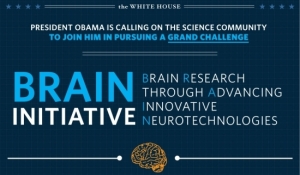I’ve wondered about medical research funding ever since I got into physical therapy school. It seems to be a huge portion of our federal budget (for good reason), and billions of dollars are given to government organizations such as the NIH every year. But, legislators seem to have significantly cut research funding in the past few years. Granted, the economic crisis of 2008-2009 was a huge blow across the board, but the government shutdown and following “sequestration” also had a huge impact on NIH grant awards. So why is medical research being put to the side, while our country’s population continues to grow older and chronic conditions are becoming more prevalent?
If you’re reading this blog, you probably know that most political changes revolve around money. This can be good or bad, but ultimately depends on what our elected officials believe should receive more funding. For example, in 1998, President Clinton made a priority of doubling the NIH budget, which occurred in 2003. Since then, medical research funding has become stagnant. This is ultimately causing our country’s best scientists and researchers to continuously fight for funding and grants, rather than actually doing research.
The sheer complexity of research funding is well beyond the scope of my blog. However, we can get a good basic picture of the overall impact of funding and politics on medical research if we look at the NIH. First, let’s follow the money!
Getting better with technology!
Obviously, this is a rudimentary breakdown of how money is handled by the government. But what’s important here is the fact that the budget for the NIH, and consequently medical funding, can vary depending on the political climate. While there have been no huge changes in funding (expect for a $10 billion stimulus in 2009), the NIH can be a big target for reducing its budget, if legislators believe another government agency needs more funding. For example, in 2013 the NIH budget was $28.9 billion dollars. In 2014, the funding increased to $29.0 billion. The budget for 2015 has not been set yet, but a Senate bill would increase NIH funding to $30.5 billion, yet another increase. This bill, if passed, would also allot $100 million for the National Institute on Aging, effectively DOUBLING the research funding for Alzheimer’s. Great news, but don’t expect to hear anything else about this bill until after the upcoming November elections.
So how does this impact physical therapy research? Well, an aging population means more chronic conditions, such as Alzheimer’s and Parkinson’s. Doubling the funding available for Alzheimer’s research essentially allows for a broader range of studies on effective treatments and rehabilitation protocols, something desperately needed for this population. The National Institute on Neurological Disorders and Stroke (NINDS), a part of the NIH, has also been leading research on Parkinson’s disease for years. In fact, NINDS led studies on deep-brain stimulation, which has shown to be effective for reducing tremor and improving quality of life. Of course, being a member of the NIH, the NINDS is affected by changes in the overall NIH budget. In turn, advancements in physical therapy interventions for these people can and will change with new technologies and evidence that different forms of treatment can be more effective than what we use now.
 (Side note: If you haven’t heard of the BRAIN Initiative, I highly suggest you check it out! The Brain Research through Advancing Innovative Nanotechnologies (BRAIN) Initiative is a new program that has just received $46 million in grant money, to develop revolutionary technologies to help those with brain disorders.)
(Side note: If you haven’t heard of the BRAIN Initiative, I highly suggest you check it out! The Brain Research through Advancing Innovative Nanotechnologies (BRAIN) Initiative is a new program that has just received $46 million in grant money, to develop revolutionary technologies to help those with brain disorders.)
While the research mentioned above is great, none of it would be possible if legislators are not aware of the need for further research. We have to remember that politicians get requests for funding from hundreds, even thousands, of groups and organizations throughout their terms. The organizations responsible for acquiring funding for further research are often single-disease groups, like the Alzheimer’s Association or National Parkinson Foundation. These two are examples of huge organizations that have enough political clout to be taken seriously (to be blunt) by legislators. Of course, any groups can receive research funding if they have a compelling need, but large organizations that have national support and donation funding are often the ones politicians turn to first.
We as PTs can of course become members of these organizations, donate, and advocate for more research funding. If you are already involved with an organization, you can start advocating today! If not, becoming a member is as simple as becoming an APTA member (wink, wink). The APTA itself is also a strong political force in healthcare funding and medical research funding. The NIH funds many large physical therapy studies, so the APTA has a vested interest in the annual NIH budget.
Membership dues to the APTA help pay for lobbying efforts, events, and fundraisers for legislators who are influential in budget talks. These legislators need input from their constituents on where federal money should go every year. For our purposes as healthcare providers, more funding for the NIH will help our profession right now, and in the future. Newer research allows us to maximize our efficiency and impact with patients, and ultimately leads to physical therapy having a larger piece of the healthcare team “pie.”
P.S. – I’d really like to thank all of you who read my blog! I’ve had a few people tell me they really like the information I write about, and that really means a lot to me. I know this information might be boring or bland, but hopefully my blog is making it easier to digest! Thank you all so much!


